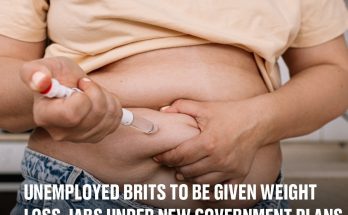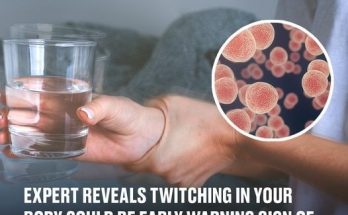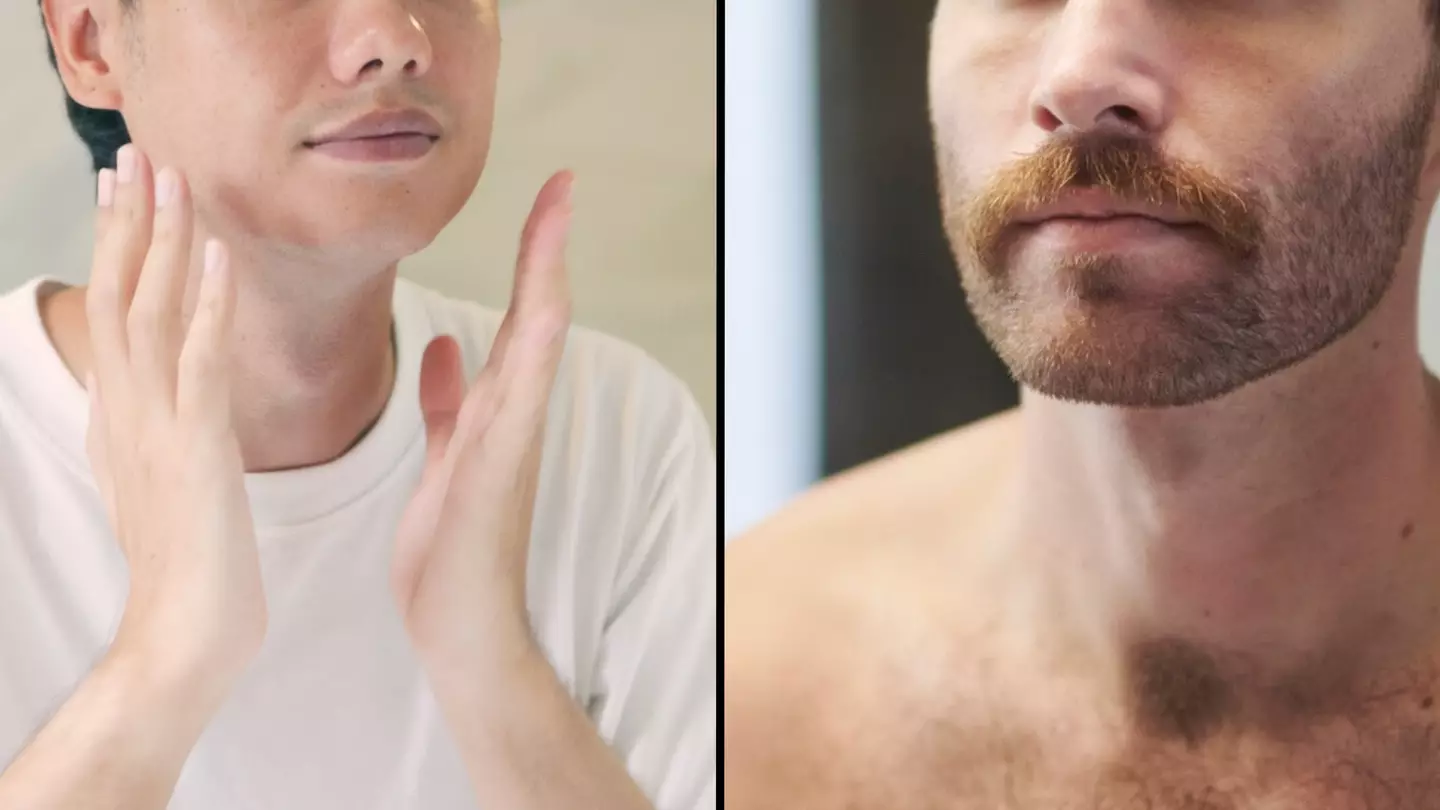
New research has revealed that one thing you’re doing in the morning could increase your risk of cancer significantly.
This is something for you to remember tomorrow when you’re looking in the bathroom mirror.
When you run through that mental tally of everything you have to do to get ready for the day, you’re probably thinking how to get everything done as fast as possible so you can enjoy your cup of coffee and breakfast – but that’s a critical mistake.
If you’re rushing this one thing, you could end up regretting it big time.
If you don’t develop cancer, you’re still at risk of diabetes and high blood pressure because of this one task.
The cancer you could be in for are head and neck squamous cell carcinoma.
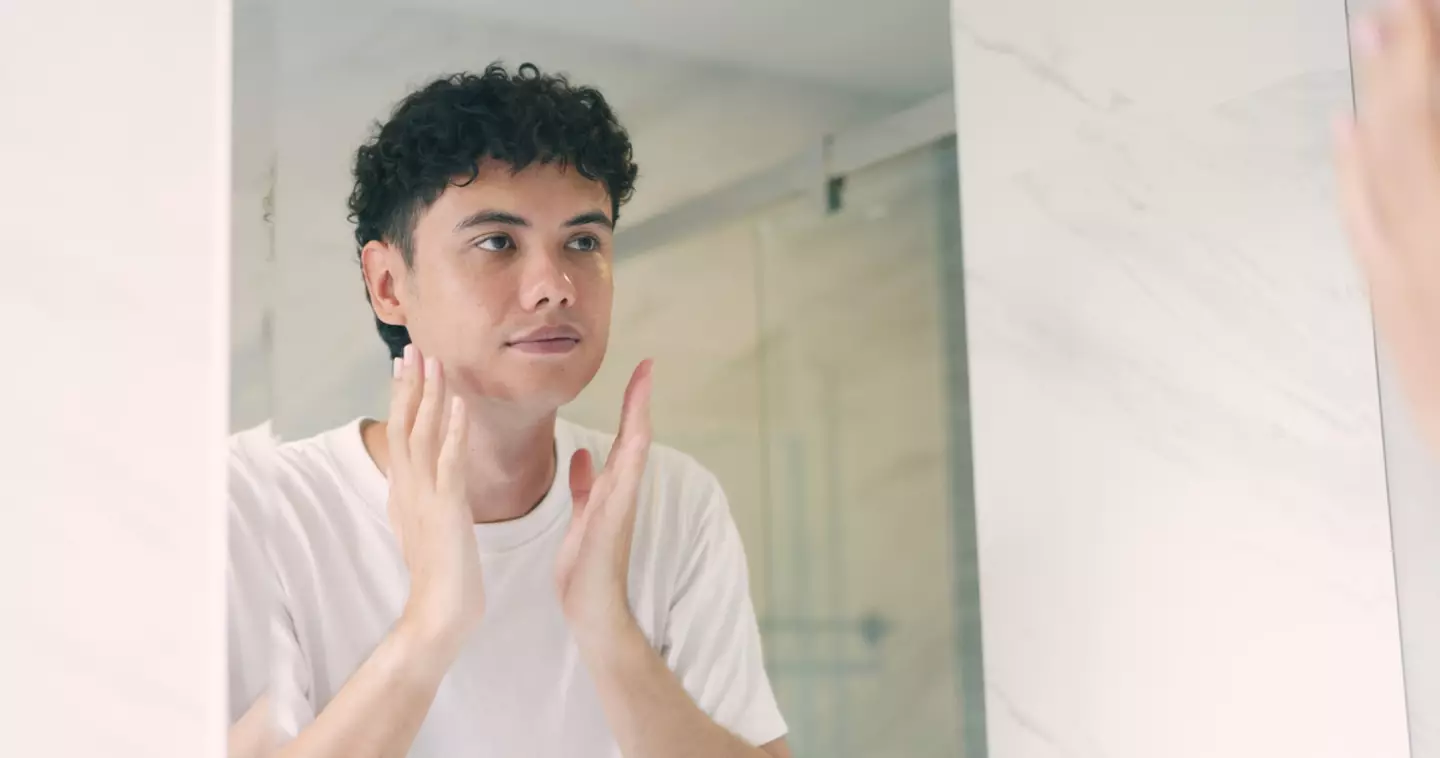
You can increase your risk of cancer if you make this mistake (Getty Stock Images)
This is because the cancers are linked to bacteria in your mouth that can also cause gum disease.
Study author Professor Richard Hayes, from New York University (NYU) explained that having good oral hygiene is essential to minimising your risk of cancer.
So, don’t rush brushing your teeth.
He said: “Our results offer yet another reason to keep up good oral hygiene habits.
“Brushing your teeth and flossing may not only help prevent periodontal disease but also may protect against head and neck cancer.”
In the UK, there are almost 13,000 new cases of head and neck cancer every year, and as the UK Adult Oral Health Survey found, only 30 per cent of people floss, there’s definitely a problem that needs to be fixed.
The symptoms of head and neck cancer are subtle, which means that when they become obvious, it tends to be in the later stages and harder to treat.
Macmillan Cancer Support explained that nine in 10 head and neck cancers start in squamous cells, which are cells that cover the lining of the mouth, nose and throat.
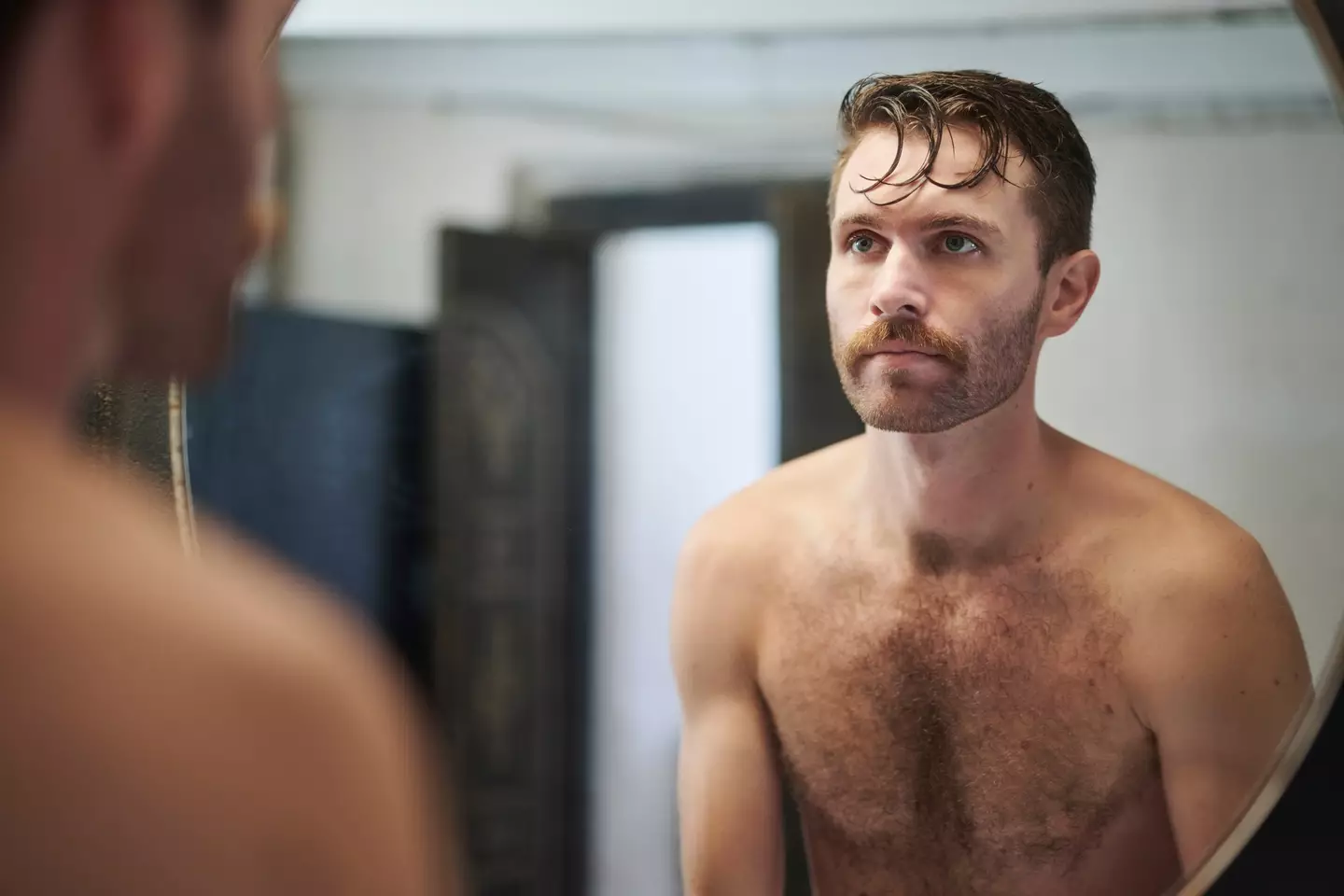
The study found that not brushing your teeth properly can increase your risk of cancer (Getty Stock Images)
The study, which was published in JAMA Oncology, followed the diets, lifestyles and medical history data around 160,000 people in the US who had to rinse with mouthwash and give them saliva samples.
They then tested the samples and the microbes and when following up 15 years later, 236 participants were diagnosed with head and neck squamous cell carcinoma.
Their oral microbe DNA was then compared to the 458 participants who didn’t get cancer and found 13 different types of bacteria that could be linked to the cancer, increasing your risk by 50 percent.
The study co-author said: “Now that we have identified key bacteria that may contribute to this disease, we next plan to explore the mechanisms that allow them to do so and in what ways we can best intervene.”

Dr Gaddi (@dr.gaddi) from Chicago, US, has taken to TikTok to explain why people often get confused with the two conditions.
Both health disorders are similar – yet very different – at the same time.
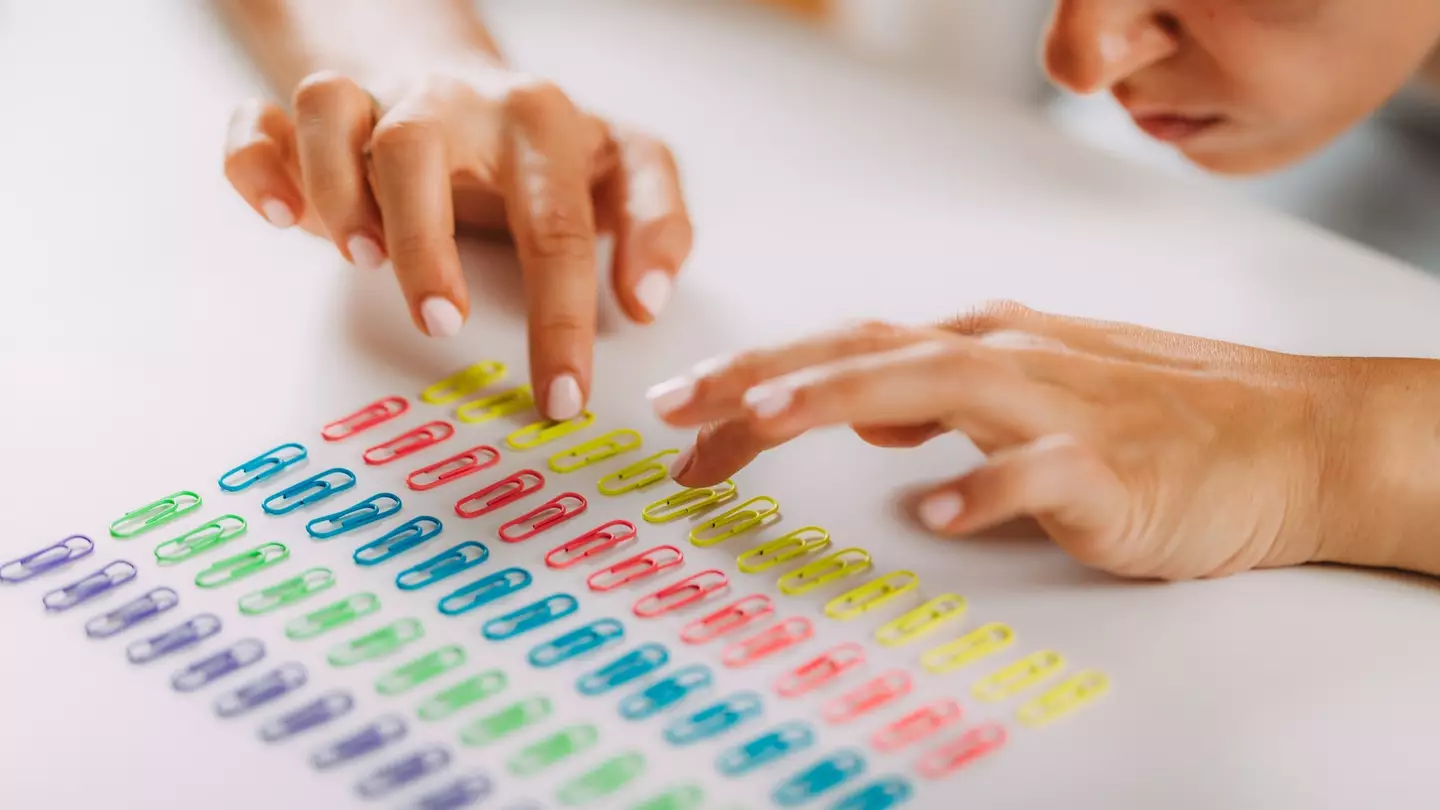
People are getting OCD confused with OCPD, Dr Gaddi suggests (Getty Stock Images)
OCD is a mental health condition where a person has obsessive thoughts and compulsive behaviours, whereas OCPD is more of a personality disorder that focuses more on perfectionism.
According to OCD UK, obsessive compulsive disorder is considered an anxiety disorder, while obsessive compulsive personality disorder is instead a personality disorder – though the charity notes it is possible that the two conditions can co-exist.
“You DON’T have OCD, you have OCPD (obsessive compulsive personality disorder),” Dr Gaddi begins in his video before outlying eight signs of OCPD.
Very organised
People who are ‘very focused on organisation, rules, order, lists and schedules’ will generally have OCPD.
If ‘colour coordination is your passion’ then this is probably you.
Struggle to ‘delegate work’
Those who struggle with the idea of ‘delegating work’ because they want everything done in their way and will often refuse to adopt another method could also have the disorder.
Striving for perfection
Those with OCPD will strive for perfection in everything they do – but, according to a 2023 study, that rigid perfectionism can lead to things being missed, such as deadlines.
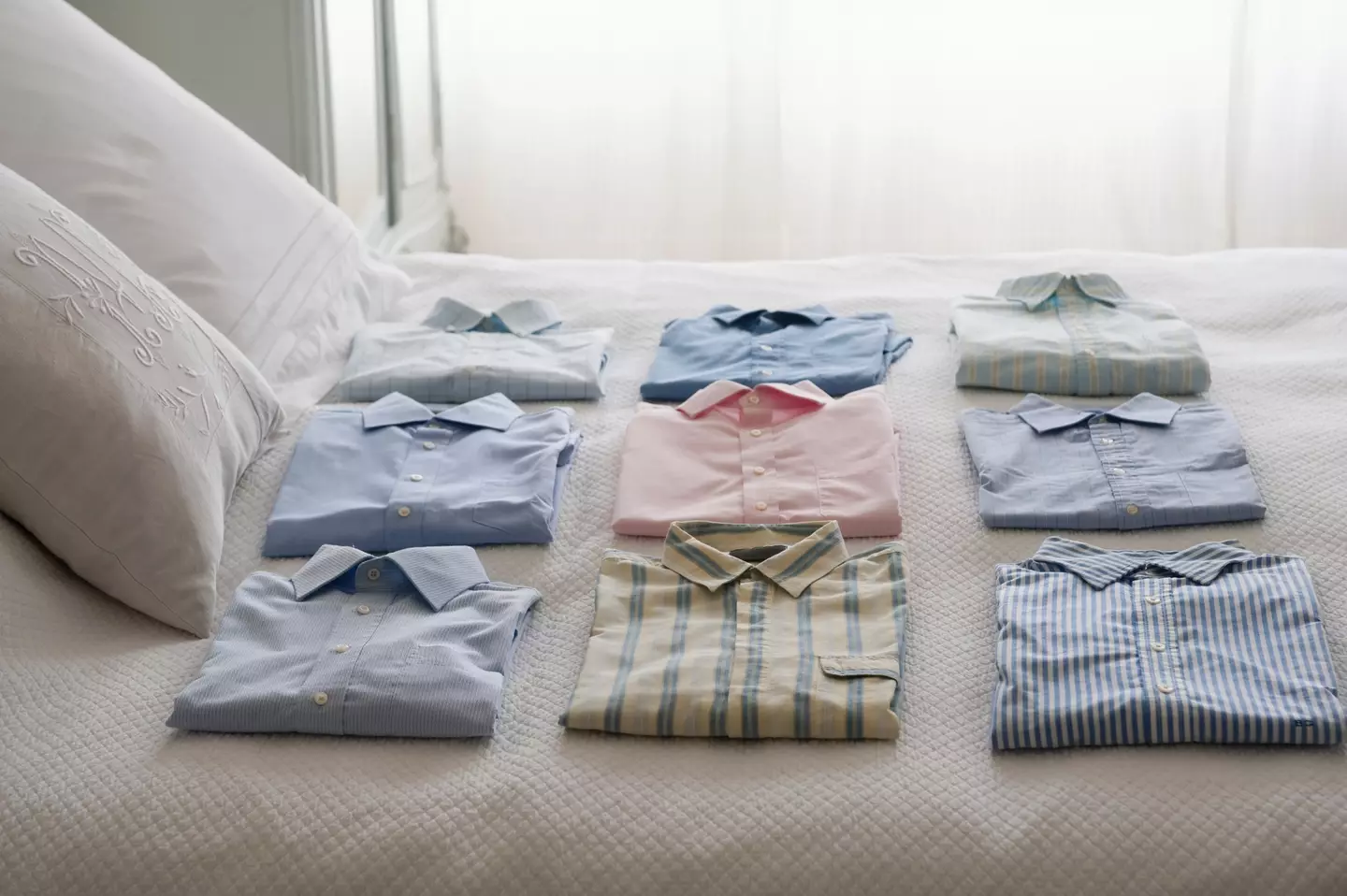
You can have OCD and OCPD at the same time (Getty Stock Images)
Productivity as a priority
Working hard and being ‘productive’ will always be a priority above everything else.
Saving money
You’re saving money for a rainy day, which is probably a good thing in today’s climate.
But saving just for the sake of it could be a sign.
Overvaluing your ‘ethics and morality’
Dr Gaddi says your ‘values, ethics and morality’ will also take over in every situation.
Unable to discard certain items
Similar to hoarding, the psychiatrist warns that if you find it ‘difficult to discard worthless objects (with no sentimental value)’, then it could be an indicator of OCPD.
Being described as ‘stubborn’
Lastly, if others may describe you as ‘rigid’ or ‘stubborn’, then Dr Gaddi thinks you could be suffering with the condition.
Expanding on the differences, Dr Gaddi added: “OCPD is personality disorder. Obsessions and compulsions are not necessarily present and the person may be just fine with their personality traits.”
With regards to possible treatments, the doctor said: “Psychotherapy is very important for both.”
OCD UK note: “It’s not easy to treat OCPD, even when the person is prepared to seek help, but if the person is willing to seek and accept help, then treatment can be effective.
“It has been suggested that sometimes those with OCPD may respond better to treatment because of rigid adherence to therapy tasks set by the therapist.
“The treatments for OCPD are very similar to those for OCD, with the treatment found to be the most effective being a talking therapy called Cognitive Behavioural Therapy (CBT).
“Some people find they also need the additional support of medications.”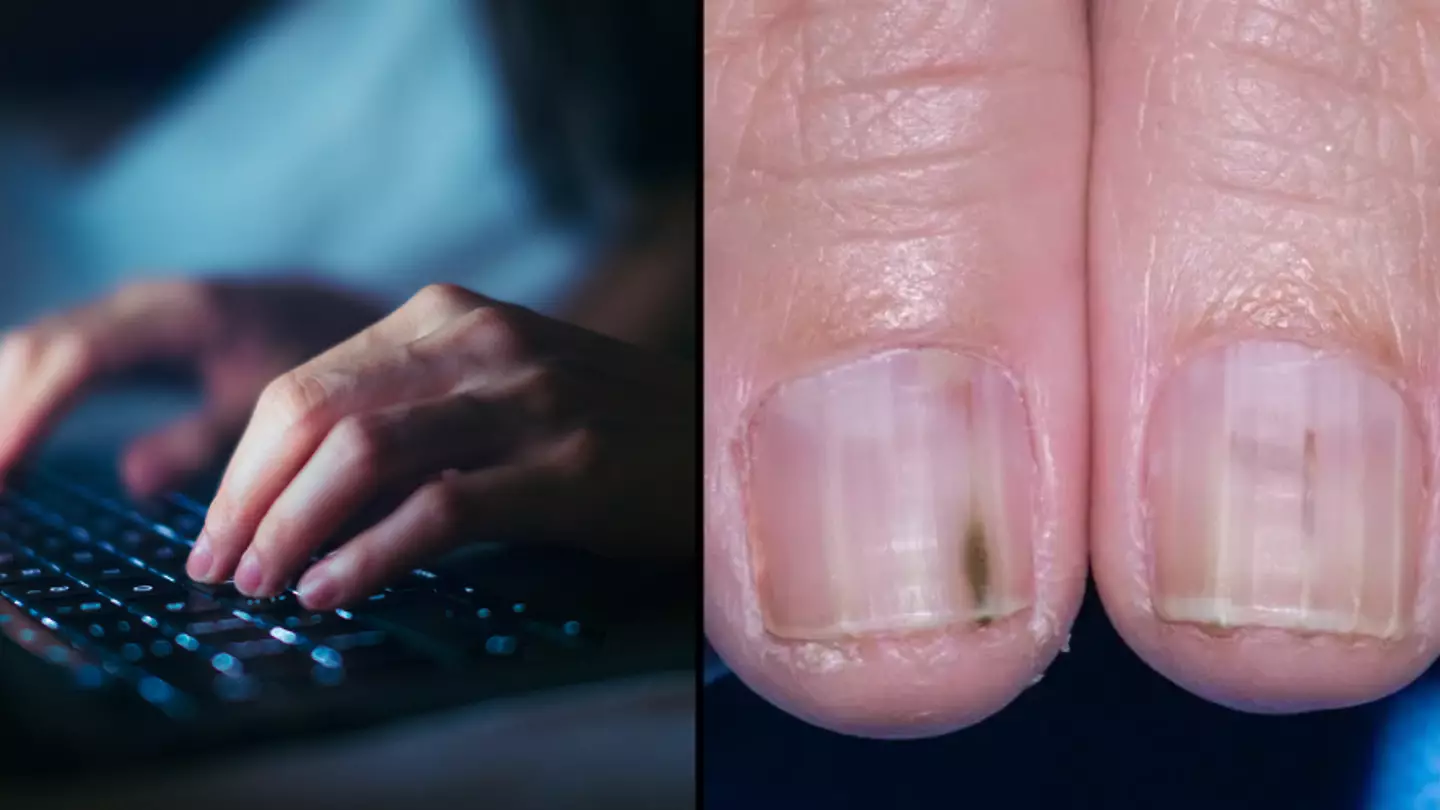 Subtle signs on your fingers that could be sign you’re at risk of cancer
Subtle signs on your fingers that could be sign you’re at risk of cancer
A study has claimed a subtle change in our bodies means we could be at risk for cancer – and it’s somewhere you might not expect to look.
Around 167,000 people die from cancer every year in the UK according to Macmillan, meaning that keeping your eye out for any changes to your body which could mean something sinister is important.
Symptoms such as unexplained weight loss, changes in bowl or bladder habits, lumps and new moles are things we know to get checked out – but did you ever think to check your hands for signs as well?
According to a new study, changes to your nails could potentially be a symptom of a syndrome which can increase your risk of cancer.
An important change to look out for on your nails is the appearance of a dark line running vertically down the nail from the nail bed to the tip.
The lines are known scientifically as melanonychia, and can be either brown or black in colour.
Discolouration does not necessarily mean you should be immediately worried, as the change can also be caused by trauma or pregnancy. People with a darker complexion are also more likely to develop the lines.
However it’s worth getting them checked to rule out anything sinister, especially as recent studies have revealed it could be a sign of BAP1 tumour predisposition syndrome.
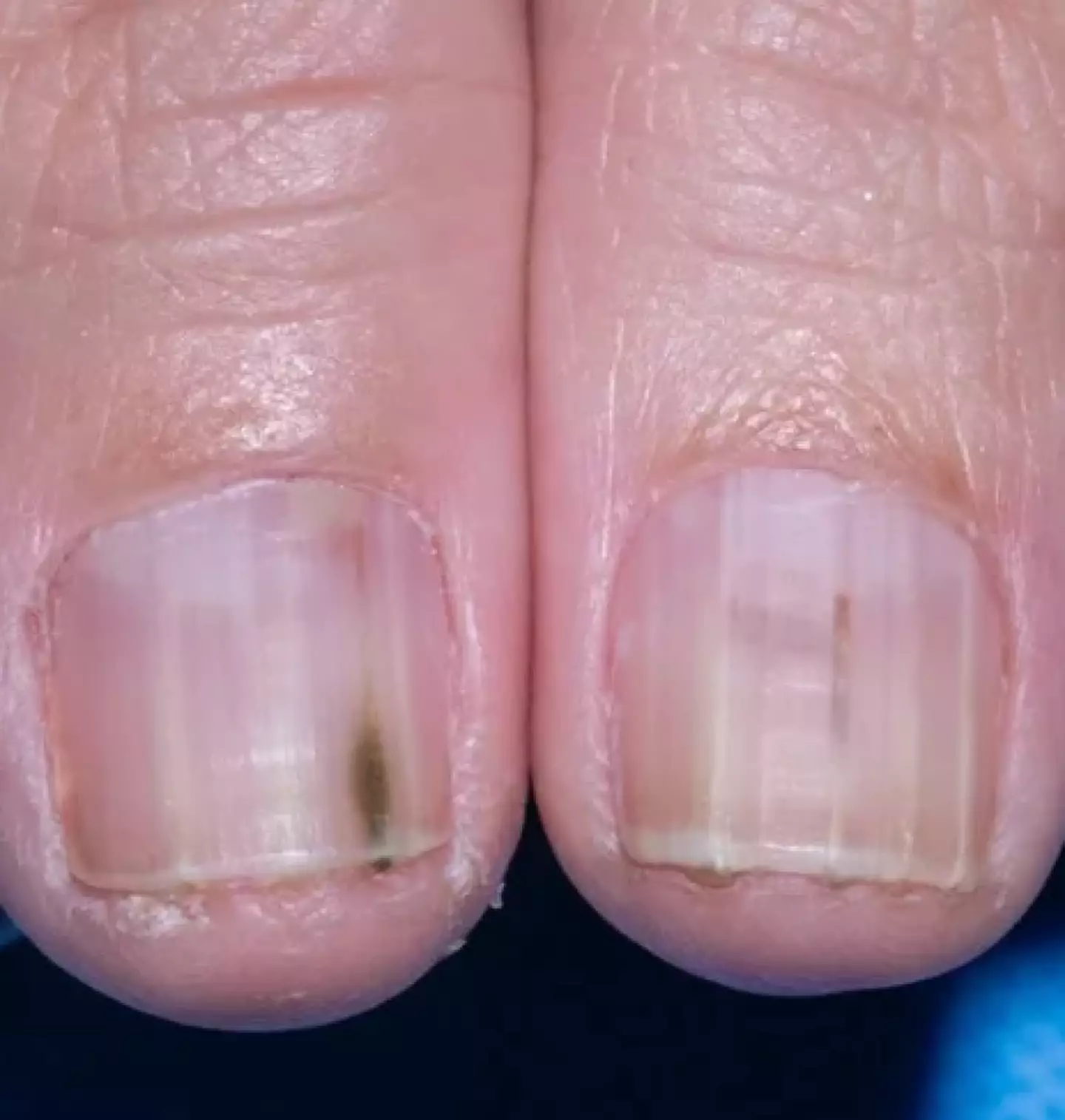
Stripes in the nails are something to look out for (JAMA Network)
The mutation means you’re at a higher risk of developing tumours of the skin, eye, kidney, and mesothelium (the tissue that lines the chest and abdomen).
These tumours can develop at any age and are fast growing, however it’s important to note that not everyone with the mutation will develop cancer. Benign tumours can also occur.
Another sign to look out for is a small thickened area growing under the nail along with a white line.
Other changes in your nails which you should get checked out are:
- Nails lifting away from the bed
- Redness and swelling around the nail
- Irregular pigment (such as green or black colours)
- Discolouration of the skin around the nail
- Any other significant nail changes such as splits, cracks or deformities
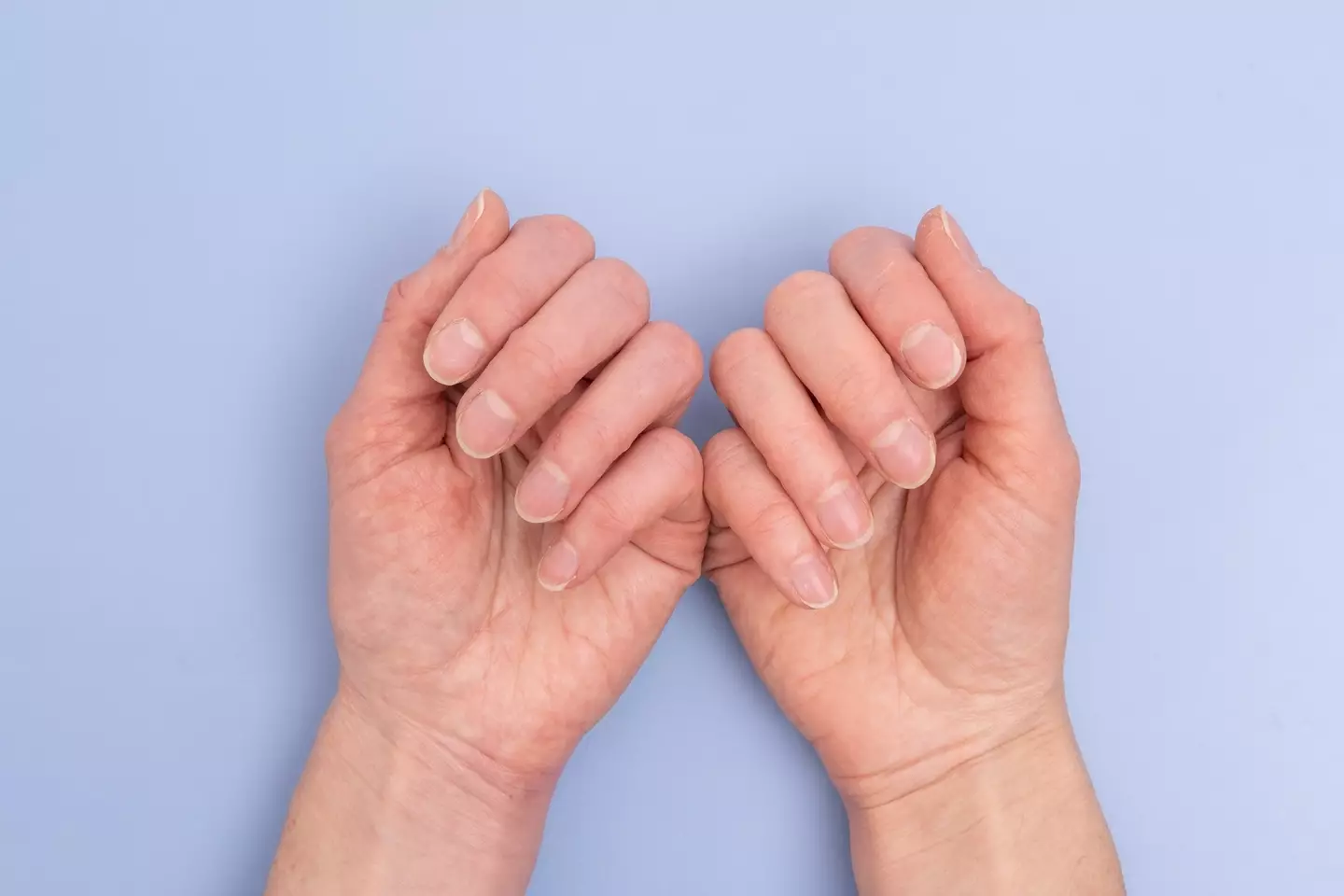
It comes following a new study. (Getty stock photo)
Surprisingly your fingers can also reveal if you are at risk of developing lung cancer, with clubbing of the nails seen as an early warning sign for the disease. Cancers often associated with clubbing are lung cancer and mesothelioma.

Around the world, about 10 million people die from cancer every year, making it one of the largest health problems that we face today.
There are over 200 types of the disease, depending on the organ or tissue that it originates from.
But registered cancer dietician Nichole Andrews, who goes by @oncology.nutrition.rd on TikTok, says reducing our cancer risk is a lot simpler than you might think.

There are some things you can do to decrease your risk of getting cancer. (Getty Stock Photo)
She said in a TikTok video: “There are only seven things – nutrition and lifestyle – that increase your cancer risk. Seven things – it’s the complete list.”
Alcohol and tobacco
The first two things are alcohol and tobacco, as she explains: “Tobacco is well known, but alcohol isn’t for most people.
To reduce your risk of cancer, Nichole says, you need to cut alcohol completely out of your diet.
Processed meats
According to Nichole, you need to wave goodbye to burgers and full English breakfasts.
“The more you consume, the higher risk of colorectal cancer.”

Excess body fat tissue
Nichole then explains that the next is having excess levels of body fat tissue, as you’ll want to get it to a healthier level.
“This doesn’t mean you have to have the scale number go down,” Nichole says, but you could need to get your amount of body fat tissue down to a healthy level.
If not, you could increase the risk of 13 different cancers.
Not eating enough plants
Next, she highlights: “You need to be aiming to get 30 grams of fibre from plant foods a day.
“If you have a low fibre diet, it’s going to increase your risk of cancer.”
Not getting enough exercise
Nichole then explains that you need to aim for 150 minutes of exercise or physical activity a week, as by ‘not moving, you’re increasing cancer risks’.
The NHS says you either need to be doing 150 minutes of moderately intense activity or 75 minutes of very intense exercise every week, and you should do strengthening exercises to work all major muscle groups at least two days a week.
Taking to many supplements
She concludes by saying to avoid taking excessive supplements, as they can eventually damage cells.
Turns out that it sounds quite easy to reduce your risk of cancer. It’s a matter of cutting these things down bit by bit to reach your long-term health goals.
.png)
Keeping your teeth clean and healthy takes effort and time – twice a day to be exact, two minutes each time.
It’s a nice feeling too, getting rid of that horrible morning breath or getting rid of all those pesky food particles, and it of course reduces the chances of you getting cavities or running into gum problems.
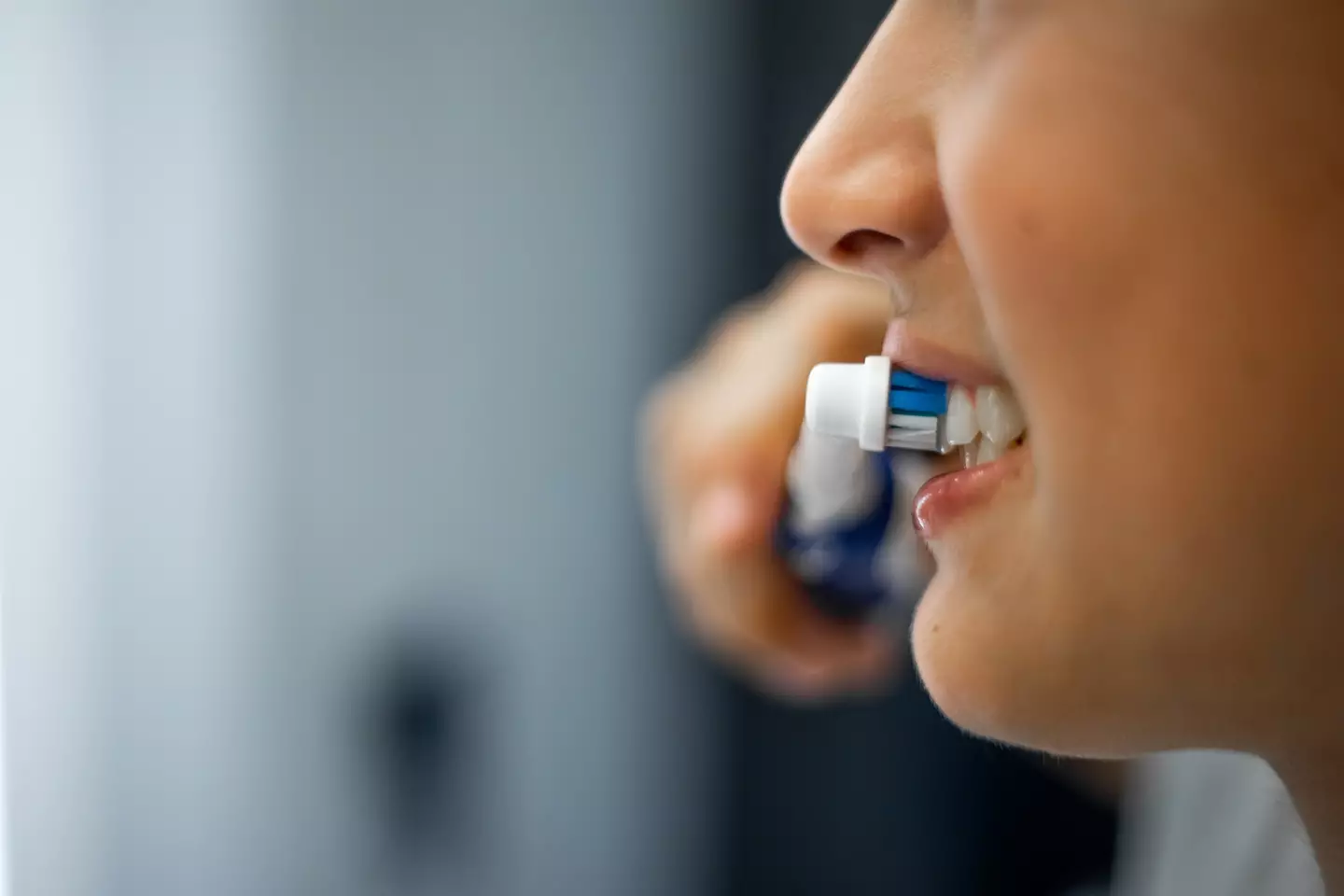
You should keep tabs on this one thing while cleaning your teeth. (Getty Stock Photos)
But apparently, there’s something that too many people do that could cost them their oral health, and you may not have had the thought until it’s too late.
Dental experts around the world have realised this problem, and are urging to act now if you’re a culprit of it.
Life can get busy after all, so getting things in our routine without thinking twice about it is quite easy to do – though some dentists have taken to social media to speak about the oral health worry.
It’s a shock because a lot of people don’t have an idea of an exact timeframe or lifespan of a toothbrush.
The hygienist reveals all though, explaining: “Regardless of whether you have an electric or manual brush, you need to be changing your brush head at least every three months.
“The best way to tell if you need to change your brush is to hold it up and, from the back, if you can see the bristles splaying out – that means you need a new head,” she revealed.
She also highlighted that if your brush is wearing down quicker than it should, it could mean you’re brushing too hard.
The expert said: “If you’re scrubbing too hard with your toothbrush, this can lead to loss of enamel – which can make your teeth appear more yellow – or you can get recession, which is where the gum shrinks away. Neither of these look particularly attractive and can also cause lots of other problems.”

Checking the bristles on your toothbrush can indicate when it’s time to get a new one. (Getty Stock Photo)
Not only will worn away enamel reveal yellow teeth, but your chompers could also become more sensitive to different temperatures and sensations.
According to the NHS, you should stick to this three-month rule, as studies show that toothbrushes are less effective at removing plaque after this period of time, meaning you’re leaving some of the bad particles behind.
It also means that you could be going around with bad breath, increasing the chance of cavities and at the most extreme, gum disease.
